 October 22, 2020 John E. Ross, KD8IDJ, Editor
| ||||||
Colorado ATV Group Transmits Images from CalWood Fire Radio amateurs in Colorado took advantage of amateur television (ATV) to observe recent forest fires. Boulder ATV repeater W0BTV has been transmitting views of the CalWood fire, considered 26 percent contained as of mid-week. The camera is at KH6HTV, southeast of Boulder and 13 - 15 miles from the fire. Using a telephoto lens, the KH6HTV TV camera was able to view the fire along the Front Range as it approached the first ridge of the Rocky Mountain foothills. TV images are being received at the Boulder California and Oregon have been experiencing major forest fires for the past couple of months. Fire hit Boulder County on October 17, when the CalWood fire broke out northwest of Boulder. By mid-week, the fire had consumed some 10,000 acres of forest, sparked a prairie fire outbreak, and destroyed more than 2 dozen homes. The W0BTV repeater video is being streamed live over the British Amateur Television Club (BATC) server in the UK. The right audio channel carries live audio from the BCARES 2-meter repeater, with the emergency net traffic. Not much was to be seen on the ATV repeater's video image at mid-week, as a cold front had rolled in, bringing light rain and fog, helping to suppress the fire. The Boulder ATV club has installed a new 5.9 GHz FM-TV beacon transmitter on a government building for the purposes of encouraging microwave experimentation, to get hams to try ATV (especially with low-cost FM-TV gear now available for drones), to use as a known signal source for testing antennas and receivers, and to increase usage of the microwave bands, which are under threat. -- Thanks to the Boulder Amateur Television Club Repeater Nationwide Red Cross Emergency Communications Drill Set for November 14 The nationwide American Red Cross Emergency Communications Fall Drill, a joint exercise with ARRL Amateur Radio Emergency Service (ARES®) groups, is set to take place on November 14. This exercise evolved from the highly successful spring drill that attracted hundreds of participants from some 40 states and Puerto Rico. The fall drill will be a Winlink-specific event with these goals: (1) pass Winlink Proficiency Goals have been drafted, a Winlink technical support team has been formed, and Metrics for Drill Success have been developed. The proficiency goals are established as a training guideline and references online training resources. Many hams new to Winlink may find these resources helpful. More than 300 radio amateurs have signed up for the event, and some 100 volunteers showed up for a pre-drill briefing call earlier this month. Another briefing call will be held in early November. This event is open to all radio amateurs. For more information, contact Mike Walters, W8ZY, with ARES-related questions, or Wayne Robertson, K4WK, with Red Cross-related topics. -- Thanks to The ARES Letter Active LF Operator Offers Advice on New FST4 and FST4W Protocols The recent beta release WSJT-X version 2.3.0-rc1 (release candidate 1) digital software suite includes two new protocols, FST4 and FST4W. FST4 is for two-way contacts, while FST4W is for "quasi-beacon" style transmissions. Both modes offer a range of options for T/R-sequence lengths and threshold decoding sensitivities extending well into the -40 dB range, developers said, as well as a wide variety of parameters that can be tweaked, such as transmission time, bandwidth, and so forth. On the WSJT-X development reflector, Paul Kelley, N1BUG, discussed whether the wide variety of options are really necessary or a stumbling "LF and MF are not HF," Kelley said. "There is no one-size-fits-all for these bands. On HF, you may be able to work the whole world with one relatively fast speed. It is not so down here." Kelley pointed out that MF operators are limited to 5 W EIRP on 630 meters and a mere 1 W EIRP on 2200 meters. Working "real DX" requires some specialized modes, plus determination and patience. "One would probably not want to use anything slower than 120 seconds for QSOs with well-equipped stations at 1,000 kilometers (620 miles) distance," he said. "It would be very boring and waste a lot of time. But for some DX paths on 2200 meters, only 1,800- or 900-second periods would offer any hope for success. It's not so boring when you are about to set a new world record or make a personal best DX QSO. We need this flexibility." Kelley predicts that some new conventions will emerge over time -- for example, 900- and 1,800-second periods might not see much use on 630 meters, while most of the faster choices probably will. "On 2200 meters, I think all four FST4W speeds will be quite useful," he said. "It may be that the fastest FST4 options won't see a lot of use on 2200 meters, but it may be too early to know for sure." -- Thanks to the ARRL Contest Update ARRL Podcasts Schedule
The On the Air and Eclectic Tech podcasts are sponsored by Icom. Both podcasts are available on iTunes (iOS) and Stitcher (Android), as well as on Blubrry -- On the Air | Eclectic Tech. The K7RA Solar Update Tad Cook, K7RA, Seattle, reports: Sunspots appeared on every day of the past reporting week, and the average daily sunspot number increased from 13.1 to 15.1. Average daily solar flux rose from 73.1 to 74.5. Geomagnetic indicators were up slightly, with average daily planetary A index going from 2.7 to 5, and middle latitude A index from 1.9 to 4.1.
Predicted planetary A index is 18 and 20 on October 22 - 23; 15 on October 24 - 26; 12 on October 27; 10 on October 28 - 29; 5 on October 39 - November 6; 10 on November 7; 5 on November 8 - 15; 10, 15, and 18 on November 16 - 18; 20 on November 19 - 20; 24, 14, and 10 on November 21 - 23; 8 on November 24 - 25, and 5 on November 26 - December 5. Sunspot numbers for October 15 - 21 were 14, 14, 15, 28, 12, 11, and 11, with a mean of 15. The 10.7-centimeter flux was 73.8, 75.3, 73.1, 75.9, 74.8, 74.7, and 73.7, with a mean of 74.5. Estimated planetary A indices were 3, 4, 5, 3, 6, 4, and 10, with a mean of 5. Middle latitude A index was 2, 4, 5, 3, 5, 3, and 7, with a mean of 4.1. A comprehensive K7RA Solar Update is posted Fridays on the ARRL website. For more information concerning radio propagation, visit the ARRL Technical Information Service, read "What the Numbers Mean...," and check out K9LA's Propagation Page. A propagation bulletin archive is available. For customizable propagation charts, visit the VOACAP Online for Ham Radio website. Share your reports and observations. Just Ahead in Radiosport
FCC Headquarters Relocates FCC Headquarters has moved. The new address is 45 L St. NE, Washington, DC 20554. The change is effective immediately. The FCC announced plans to move last spring, but the transition was delayed by the COVID-19 pandemic. The FCC, like many federal agencies, has its own ZIP code, so there will be no disruption in mail delivery sent by USPS to the former address. The FCC still prohibits the delivery of hand-carried "The FCC continues to balance its efforts to be accessible to the public with the need for heightened security and health and safety measures and encourages the use of the Commission's Electronic Comment Filing System (ECFS) to facilitate the filing of applications and other documents when possible," the FCC said in an October 15 Public Notice. Due to the pandemic, the move was accomplished by professional movers without the presence of any employees, all of whom had been working from home. An attempt was made during the summer to let employees back into headquarters for a day to pack up their offices and remove personal belongings, but that plan had to be scrapped after several employees tested positive for COVID-19. Most FCC staff continue to work from home and are not expected to be physically present in their new offices before next June. In anticipation of the planned move, the FCC last spring also announced the adoption of a new FCC seal. The redesign is the product of an agency-wide contest that solicited proposals from employees and contractors. IARU Official Challenges Member-Societies to Focus on "Tomorrow" Issues International Amateur Radio Union (IARU) Region 1 President Don Beattie, G3BJ, urged member-societies attending the virtual Region 1 General Conference on October 16 to keep an eye on future issues affecting amateur radio and IARU Region 1 (Europe, Africa, and the Mideast). In closing the 6-day meeting, Beattie said he looked forward to the planned in-person workshop on the future of amateur radio, set for next year, and expressed the hope that the COVID-19 situation would allow the event to go forward as early as possible. Beattie also challenged member-societies to increase their focus on "'tomorrow' issues -- tomorrow's people, tomorrow's technologies, tomorrow's activities, and tomorrow's ways of communicating with those we represent." He also asked member-societies to communicate The week-long virtual assembly included discussion of papers submitted by member-societies, the Executive Committee, and other IARU components. This resulted in some 50 recommendations to the Final Plenary Meeting in areas of finance, HF, VHF, EMC, youth, and IARU Region 1 governance. Some 120 delegates were present for the Plenary, and heads of national delegations considered and voted on these recommendations, which will result in actions and policy changes in IARU Region 1. Some new appointments were made in IARU Region 1, to succeed people who were retiring from their roles. The new appointments were:
Beattie thanked those retiring and recognized their contributions. "Looking back on our first Virtual General Conference, delegates agreed that it was different from General Conferences held in the past," Beattie said. "Although we did not have opportunities for social interaction between delegates, we can look back on a successful and very effective meeting. We are already looking forward to our hopefully in-person workshop in Novi Sad, Serbia, in 2021." Papers discussed at the conference are available for download. -- Thanks to IARU Region 1. ARRL Learning Network Webinars ARRL members may visit the Learning Network website to register for upcoming sessions and to view previously recorded sessions. The schedule is subject to change. How to Get Started in Amateur Radio Contesting: Anthony Luscre, K8ZT Why do hams contest? How would I benefit from contesting? What do I need to get started in contesting? What are good contests for Tuesday, November 3, 2020, 10 AM PST/1 PM EST (1800 UTC) Learn and Have Fun with Morse Code: Howard Bernstein, WB2UZE, and Jim Crites, W6JIM Morse code, or "CW," is a popular ham radio operating mode. Learning CW does not have to be an arduous or lonely experience. Learn, practice, and enjoy CW with the methods used by the Long Island CW Club. Thursday, December 17, 2020, 5 PM PST/8 PM EST (0100 UTC on Friday, December 18) Announcements
Robert Bankston, KE4AL, is New AMSAT President Robert Bankston, KE4AL, of Dothan, Alabama, is the new president of AMSAT. The AMSAT Board of Directors elected Bankston at its annual meeting on October 18, to succeed Clayton Coleman, W5PFG. Bankston has served as Treasurer and Vice President of User Services. He is a life member of both ARRL and AMSAT. He Bankston is active on the satellites and enjoys operating portable from remote grid squares. For his part, Coleman said that it had been "both a joy and a privilege" to serve as AMSAT president during 2020, which he called "a rather difficult year" for many in amateur radio. "With the talented and capable individuals sitting on AMSAT's new Board and its officers, I am confident in a bright future ahead for AMSAT and the Amateur Radio Satellite Service." Other officers elected included Paul Stoetzer, N8HM, as Executive Vice President; Jerry Buxton, N0JY, as Vice President of Engineering; Drew Glasbrenner, KO4MA, as Vice President of Operations; Jeff Davis, KE9V, as Secretary; Steve Belter, N9IP, as Treasurer; Martha Saragovitz as Manager; Alan Johnston, KU2Y, as Vice President of Educational Relations, and Frank Karnauskas, N1UW, as Vice President of Development. -- Thanks to AMSAT News Service 2021 Hamvention® Award Nominations Open on November 1 Nominations for the 2021 Hamvention Awards will open on November 1. Dayton Hamvention® will grant awards in the categories of technical achievement, special achievement, amateur radio operator of the year, and amateur radio club of the year.
These awards are conferred annually. Nominations close on February 15, 2021. Nomination forms are available. Additional information may be included as attachments. Provide a means to contact the nominee. Submit forms by email or US mail to Hamvention, Attn: Awards Committee, P.O. Box 964, Dayton, OH 45401-0964. Since 1955, Dayton Hamvention has honored many radio amateurs and clubs for their dedication and contributions to amateur radio and to society. WSJT-X Developer Expresses Puzzlement over FT8 Contest Use WSJT-X co-developer Joe Taylor, K1JT, recently expressed puzzlement over the use of FT8 in contests -- rather than FT4, which was designed for contesting. "I fail to understand why anyone who uses FT8 in a contest would fail to use FT4 for much of the time," Taylor said. "FT4 is about 3 dB less sensitive than FT8, but it's twice as fast." Taylor offered the comment in the Mt. Airy VHF Society's October 2020 Cheese Bits, regarding the September ARRL VHF Contest. Taylor said "With FT4, you can still work anyone that can be worked with CW, and near the CW threshold, you'll do it faster using FT4," he said. "And with FT4, you can work stations that are far weaker (by ~20 dB) than what's necessary for SSB. When I did work other stations with FT4, I did it by transmitting the FT8 message 'K1JT FT4 318.'" Taylor said he'd then move to 50.318 MHz FT4, and several contesters followed him there. "Many more would have made it much more fruitful," he said. "For speed, flexibility, and ease of running the bands, yes, you should use SSB and CW when there are stations to work," Taylor said in summary. "When you run out of those, use FT8 and especially FT4." Taylor also remarked, "In my 80th year, I can no longer call on my past stamina for contesting." Japan's "Experience Stations" Enable Contacts Between Two Unlicensed Girls What is believed to be the first ham radio contact in Japan between two unlicensed individuals took place on October 11 between "Experience Stations" 8J1YAB/1 and 8J3YAA/3. Both were licensed through the 7-CALL Amateur Radio Club. "Today is my first amateur radio," one young girl said, as she wielded "Congratulations on your first attempt and great success," Toshiaki Tsunashima, JA4DLF, tweeted. Satoshi Yamaguchi, 7M4VQJ, the President of 7-CALL Amateur Radio Club, called CQ and made initial contact with with Yasuyuki Suzuki, JJ0RHL, from the "sister station" 8J2YAB/1 in Tokyo. The licensed supervisor of 8J3YAA/3 in Osaka was Sam Yoshida, JS3CEQ.The Experience Stations are licensed under special permission, allowing unlicensed people to operate the station under the supervising of a Puntoshi, JN1VVR, remarked on Twitter, "Thank you for your hard work. It is necessary and important to prepare and experiment so that [unlicensed] people can feel the excitement of 'something amazing' while watching the operation. This [Experience Station] operation has just begun, and the know-how that will be accumulated for the future is important." Upcoming ARRL Section, State, and Division Conventions Note: Many conventions and hamfests have been canceled or postponed due to the coronavirus pandemic. Check the calendar of canceled events on the ARRL website.
Find conventions and hamfests in your area.
ARRL -- Your One-Stop Resource for . .
Subscribe to...
Free of charge to ARRL members...
| ||||||
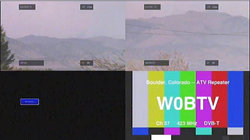
 traditional American Red Cross (ARC) forms from as many states and as many radio amateurs as possible to one of six division clearinghouses, and (2), bring as many radio operators as possible up to a "basic" level of Winlink proficiency. A series of Winlink Workshops is held each Thursday at 0100 UTC on Zoom.
traditional American Red Cross (ARC) forms from as many states and as many radio amateurs as possible to one of six division clearinghouses, and (2), bring as many radio operators as possible up to a "basic" level of Winlink proficiency. A series of Winlink Workshops is held each Thursday at 0100 UTC on Zoom.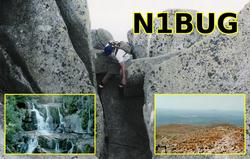 block to two uncoordinated stations attempting a contact. Kelley said he understands the concern regarding the transmission times, but, as a "very active" 2200-meter operator, he advises that the new protocols were developed with the LF and MF bands in mind.
block to two uncoordinated stations attempting a contact. Kelley said he understands the concern regarding the transmission times, but, as a "very active" 2200-meter operator, he advises that the new protocols were developed with the LF and MF bands in mind.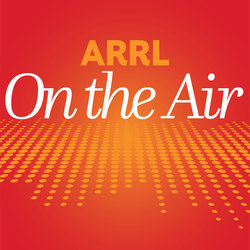 The latest episode of the On the Air podcast (Episode 10) includes an interview with ARRL Lifelong Learning Manager Kris Bickell, K1BIC, about ARRL's new "Learning Network" webinars.
The latest episode of the On the Air podcast (Episode 10) includes an interview with ARRL Lifelong Learning Manager Kris Bickell, K1BIC, about ARRL's new "Learning Network" webinars.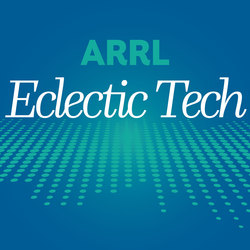 The latest edition of the Eclectic Tech podcast (Episode 19) will discuss radiosondes and how hams can receive their telemetry, in addition to a discussion about power supplies with Bob Allison, WB1GCM, of the ARRL Lab.
The latest edition of the Eclectic Tech podcast (Episode 19) will discuss radiosondes and how hams can receive their telemetry, in addition to a discussion about power supplies with Bob Allison, WB1GCM, of the ARRL Lab.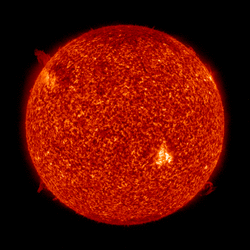 Predicted solar flux for the next 45 days is 75 on October 22 - 27; 72 on October 28 - 31; 70 on November 1 - 7; 73 on November 8 - 10; 72 on November 11; 71 on November 12 - 13; 70 on November 14 - 23; 72 on November 24 - 27, and 73 on November 28 - December 5.
Predicted solar flux for the next 45 days is 75 on October 22 - 27; 72 on October 28 - 31; 70 on November 1 - 7; 73 on November 8 - 10; 72 on November 11; 71 on November 12 - 13; 70 on November 14 - 23; 72 on November 24 - 27, and 73 on November 28 - December 5.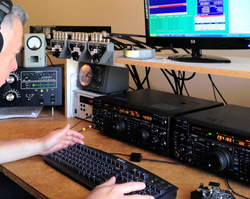 October 31 - November 1 -- UK/EI DX Contest, SSB
October 31 - November 1 -- UK/EI DX Contest, SSB.png) documents, and all COVID-19 restrictions or instructions regarding access to FCC facilities remain in place at the new location.
documents, and all COVID-19 restrictions or instructions regarding access to FCC facilities remain in place at the new location.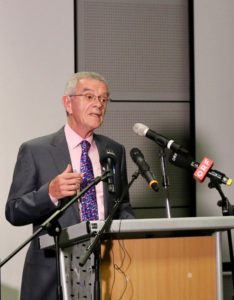 with their younger members and "take account of their views to help reshape their societies for the future."
with their younger members and "take account of their views to help reshape their societies for the future." beginners? Where can I learn more? This session will answer all of these questions and more.
beginners? Where can I learn more? This session will answer all of these questions and more..jpg) VLF Alexanderson alternator station SAQ at the
VLF Alexanderson alternator station SAQ at the .jpg) The Stillwater Amateur Radio Association (SARA) will commemorate the sinking in Lake Superior of the Edmund Fitzgerald during a storm on November 10, 1975. Listen for W0JH and W0F November 6 - 8. More
The Stillwater Amateur Radio Association (SARA) will commemorate the sinking in Lake Superior of the Edmund Fitzgerald during a storm on November 10, 1975. Listen for W0JH and W0F November 6 - 8. More  volunteered to develop and launch AMSAT's online member portal and chaired the 2018 AMSAT Space Symposium.
volunteered to develop and launch AMSAT's online member portal and chaired the 2018 AMSAT Space Symposium. respected amateur who has spearheaded a single, significant project.
respected amateur who has spearheaded a single, significant project..jpg) a large fraction of stations that are worked with FT8 are much more than 3 dB above the FT4 decoding threshold.
a large fraction of stations that are worked with FT8 are much more than 3 dB above the FT4 decoding threshold.-Tokyo(1).jpg) the mic. "Me too," the girl on the other end replied. The contact, on 40-meter SSB, was between Tokyo and Osaka. Licensed individuals were on both ends of the contact to serve as control operators. One operator reported, "There was applause at the Osaka venue."
the mic. "Me too," the girl on the other end replied. The contact, on 40-meter SSB, was between Tokyo and Osaka. Licensed individuals were on both ends of the contact to serve as control operators. One operator reported, "There was applause at the Osaka venue."-Osaka.jpg) licensed amateur. The idea is to promote experience with wireless communication technology. Before the noteworthy contact, the first contact by an unlicensed guest operator was made with 8J1JARL, a Japan Amateur Radio League special event station hosted by the Kanto Region Society of JARL, and operated by Yamaguchi Takahiko, JL1USZ.
licensed amateur. The idea is to promote experience with wireless communication technology. Before the noteworthy contact, the first contact by an unlicensed guest operator was made with 8J1JARL, a Japan Amateur Radio League special event station hosted by the Kanto Region Society of JARL, and operated by Yamaguchi Takahiko, JL1USZ.







